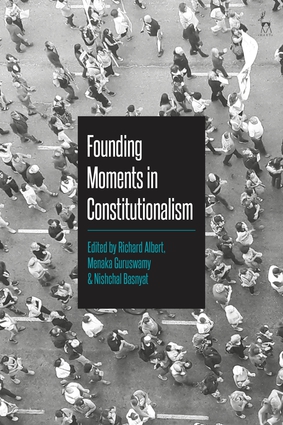[We conclude today's posts of citations for the
Honorary Fellows
announced at the recent meeting of the
American Society for Legal
History with the following citation for
Rebecca J. Scott, the Charles Gibson Distinguished University Professor of History and Professor of Law at
University of Michigan. It was read at the meeting by Bruce Mann. DRE]
It gives me particular personal and professional pleasure to help honor Rebecca J. Scott, Charles Gibson Distinguished University Professor of History and Professor of Law at the University of Michigan. Professor Scott is an internationally-recognized scholar who has made pioneering and transformative contributions to Cuban history, to the comparative study of slavery in Latin America and the Atlantic world, and to the legal history of slavery. She is also a generous mentor and an energetic and entrepreneurial builder of scholarly bridges connecting fields and scholars internationally. And, as a former president of the American Society for Legal History, she is most definitely and enthusiastically one of us.
Professor Scott received an A.B. from Harvard University, an M.Phil. in economic history from the London School of Economics in 1973, and a Ph.D. in history from Princeton University in 1982. She went to the University of Michigan in 1980 as a Junior Fellow of the Michigan Society of Fellows and has been a member of the Department of History ever since. She has held visiting professorships and senior research scholar positions in Brazil, Paris, and Princeton, and at the law schools of Yale, Duke, and New York University. She has been awarded fellowships by the National Endowment for the Humanities and the John Simon Guggenheim Memorial Foundation and was a John D. and Catherine T. MacArthur Foundation Prize Fellow. She is an elected member of the American Academy of Arts and Sciences and a Foreign Corresponding Academician of the Cuban Academy of History.
Professor Scott has written or co-written five books and dozens of articles and co-edited three volumes of essays. A common thread that weaves through her scholarship is her insistence on recovering the role of enslaved persons in their own emancipation and in their continuing struggles afterward. In this she has blazed new trails since, as a graduate student in the 1970s, she landed in Cuba and managed to do what no other American historian had been able to do since the Cuban revolution of 1959–serious research in Cuban archives. The book that resulted,
Slave Emancipation in Cuba: The Transition to Free Labor, 1860-1899, set a model of respectful, constructive, yet highly critical and challenging engagement with Cuban scholarship. In it, she challenged the dominant interpretation of Cuban slavery as a system that was doomed to collapse under the weight of its own contradictions and demonstrated instead that it was a robust mode of economic production that could have lasted into the 20th century if unchecked. It did not, she argued, because Spanish politicians and bureaucrats, Cuban independence fighters, British and American abolitionists, and Cuban slaves themselves came together in a complex process that ultimately led to abolition in 1886. The book has had and continues to have a significant impact on the legal historiography of slavery in Latin America. Professor Scott continued her emphasis on the role of enslaved persons in bringing slavery to an end in her next book,
Degrees of Freedom: Louisiana and Cuba after Slavery, which was a comparative study of the meanings of freedom in the years following emancipation.
Although not yet a legal historian in her own, modest estimation, Professor Scott in both of these books included extensive discussions of law and court cases as crucial elements in her analysis. Since then, she has pursued her study of law more deeply in a series of landmark articles and her recent path-breaking book (with her co-author, Jean M. Hébrard), Freedom Papers: An Atlantic Odyssey in the Age of Emancipation, which was immediately recognized as yet another historical tour-de-force. The book traces the travails of one family across five generations as its members navigated the legal landscapes of slavery and freedom in Haiti, Cuba, France, and the United States. It has been justly praised for its sweeping scope, novel methodology, exhaustive research, and writerly prose.
Professor Scott’s care for our discipline and for the people in it animates many of her other projects. Her co-edited volumes have put North American and Cuban historians into direct conversation with one another about slave emancipation, independence, and race. Other volumes of descriptions and finding tools for a wide range of archives in Cuba represent her taking everything she has learned about far-flung and previously under-used sources and making them available to the international community of scholars.
As the criteria for election as Honorary Fellow stipulate, there is more to being a great scholar than producing great scholarship. As many people in this room can attest, she welcomes everyone working in legal history. She has developed and nurtured collaborative scholarly networks that have helped introduce numerous graduate students and junior colleagues to one another. She has been a mentor to junior scholars, many from Latin American countries such as Cuba or Brazil. Indeed, she never comes to this meeting without a troop of graduate students and other junior scholars whom she introduces to the rest of us.
In sum, Professor Scott is a truly gifted, accomplished, and generous scholar. As one of her colleagues told us, her “energetic, friendly, and at times humorous approach to our field and our Society is a wonderful gift.” The Committee agrees and welcomes her election as an Honorary Fellow of the Society.










